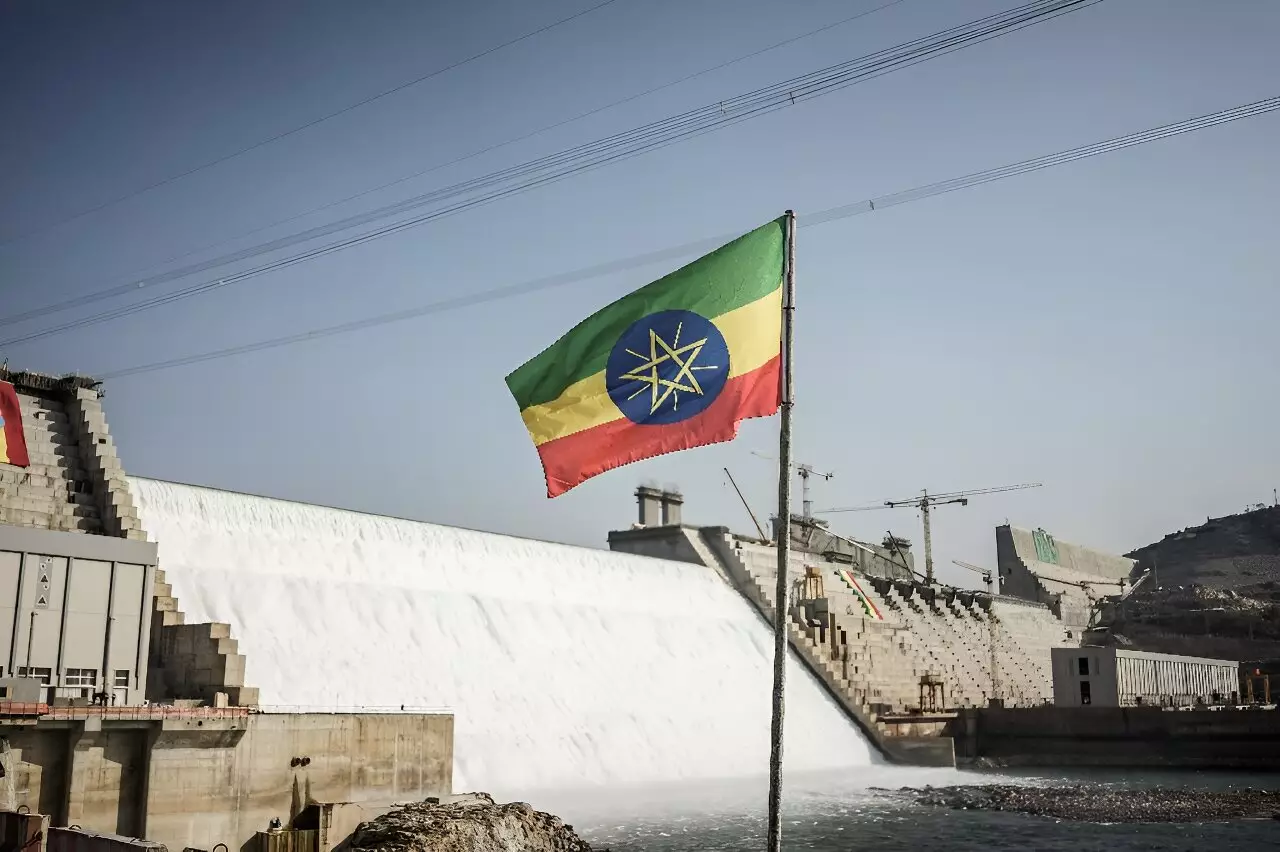Ethiopia recently announced that it has more than doubled electricity production from the Grand Ethiopian Renaissance Dam (GERD) on the Blue Nile. With two additional turbines starting operations, the controversial mega-dam is now generating 1,550 megawatts of electricity. This development marks a significant milestone for the project, which has long been a source of tensions with downstream nations Egypt and Sudan.
According to the GERD, the overall progress of the dam has transitioned from the construction phase to the operation phase. The completion of the concrete dam, coupled with the addition of two turbines generating 400MW each, has contributed to the total output of 1,550MW. In addition, the dam’s spillways are releasing an extra 2,800 cubic meters of water to downstream countries, further highlighting the operational capabilities of the GERD.
The construction and operation of the GERD have not been without controversy, with Egypt and Sudan expressing concerns about the dam’s impact on their access to vital Nile waters. Despite on-off negotiations, a three-way agreement on the dam’s operation has remained elusive. Egypt, heavily reliant on the Nile for its water needs, views the GERD as an existential threat, while Sudan’s position has fluctuated amidst internal challenges.
Ethiopia maintains that the GERD is crucial for the electrification and development of the country, which currently lacks reliable electricity access for roughly half of its 120 million population. Prime Minister Abiy Ahmed emphasized the dam’s role in managing water flow, mitigating flood risks, and ensuring downstream nations receive a steady water supply, particularly during droughts. At full capacity, the GERD could become Africa’s largest hydroelectric dam, significantly boosting Ethiopia’s power generation.
Recognizing the importance of expanding access to electricity in Ethiopia, the World Bank has announced plans to assist the country in diversifying its energy sources, including solar, wind, and geothermal power. The electricity deficit in Ethiopia remains a major challenge, perpetuating poverty and limiting socio-economic opportunities for many citizens. By leveraging clean energy resources, Ethiopia aims to address these challenges and improve living standards across the country.
The increased electricity production from the Grand Ethiopian Renaissance Dam represents a significant achievement for Ethiopia’s energy sector. While the dam has been a point of contention with neighboring countries, its potential to bolster power generation and support economic development cannot be overlooked. As Ethiopia continues to navigate regional tensions and strive for energy security, the successful operation of the GERD could pave the way for a brighter future for the country and its people.


Leave a Reply